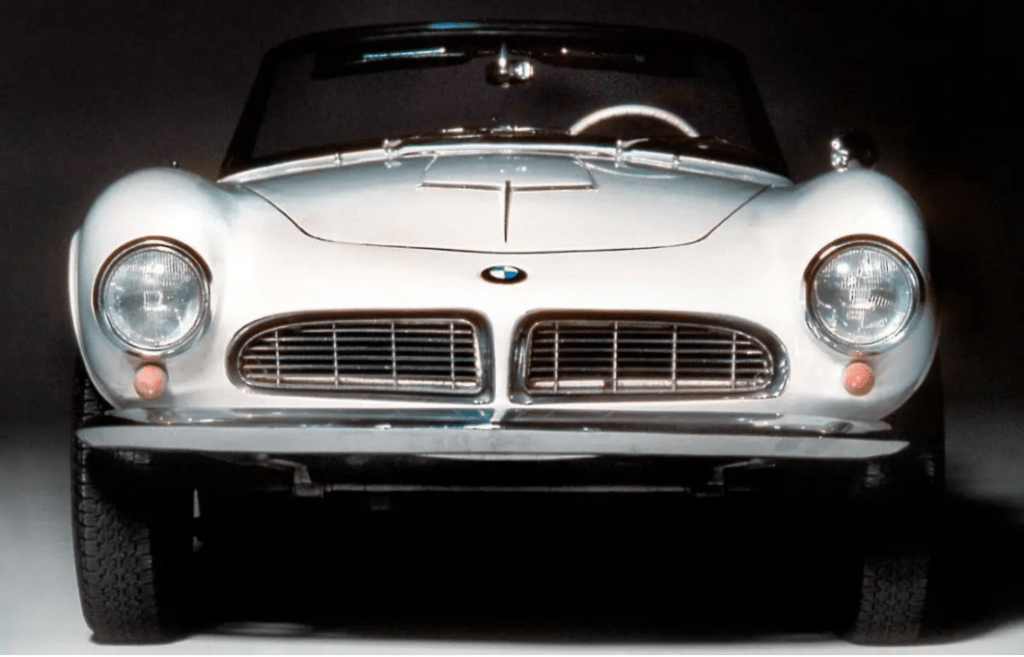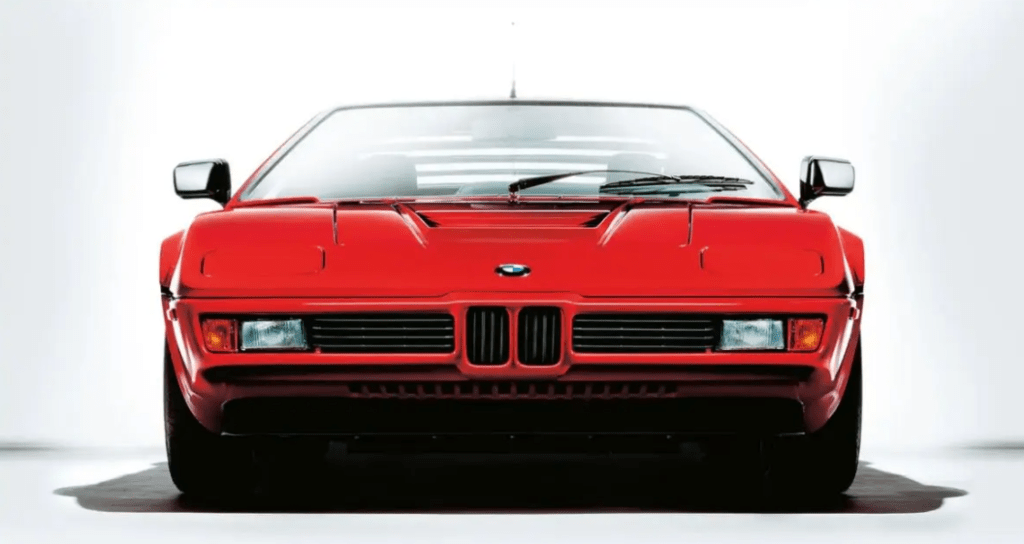Since 1933, almost every BMW has had a twin grille at the front. Although its design has changed over time – becoming smarter and more functional – it remains a hallmark of the brand. Join us on a journey through the history of BMW’s most distinctive detail.
It’s impossible to imagine a BMW without the twin grille. For almost 90 years, the iconic grille has adorned almost every car, concept car, or production model made by Bayerische Motoren Werke, better known to us as BMW. Its shape has become so recognizable that one look is enough to understand that this is a BMW car. New technologies, including the elimination of the cooling function, open up new design possibilities for the front end of the car.
BMW 303 (1933)

The BMW 303 is a milestone in BMW history for two reasons: first, the midsize sedan was the company’s first six-cylinder model, and second, it was the first car with a distinguishing feature that still characterizes BMW almost 90 years later: the twin grille. The separation by a central bar (usually chrome) was nothing new in automotive design in that era. But with the rounding and the BMW logo between the upper arches, the BMW 303 reached a new – most recognizable – level of design. Up until World War II, the twin grille became increasingly narrower and, as a consequence, more elegant on every BMW model – such as the legendary BMW 327/BM.
BMW 503 (1956)

In 1956, BMW supplemented its “Baroque Angel” lineup, the BMW 501/502, with the BMW 503 sports coupe and convertible. In this four-seat car, the tall radiators of the 1930s gave way to mid-height radiators with an all-chrome twin grille. The smaller format was made possible by the fact that the radiator grille was no longer the only component for engine cooling – as in the BMW 501/502 before it, it was supported by two side air intakes. Subsequent BMW 503 coupes, the BMW 3200 CS (1962) and BMW 2000 CS (1965) featured a similar twin grille shape.
BMW 507 (1956)

First sold in the same year as the BMW 503, but clearly ahead of its sister model in terms of progressive design, the BMW 507 roadster was the first BMW with two large horizontally arranged air intakes. The car’s creator, Count Albrecht von Hertz, was given creative freedom to design a twin grille, something that had not happened to BMW designers before the conceptual designs of the 1990s. Such large air intakes were necessary on the BMW 507 because they were the only sources of fresh air for the V8 engine radiator under the very flat hood. The design of the front end is remarkable for another reason: the BMW 507 was the company’s first model with a “shark nose” – a dynamically sloping front end that visually elongates the hood and pulls the car forward. This feature was fundamental to the “new class” of the 1960s and would continue to characterize the cars of the 3, 5 and 7 series in the 1990s.
BMW 1500 (1961)

The mid-size models of the “new class” heralded a turning point for BMW in every respect: technically, commercially, and in terms of design. The twin grille on the BMW 1500 (and its sister models 1600, 1800, and 2000) was similar to that of the BMW 503, but was unified for the first time. It was narrower than on all previous BMW models. The arrangement of the primary and secondary air intakes shaped the front end design of major BMW models through the 1980s, including the 02 series (from 1966), the BMW 2500 and 2800 sedans (from 1968), and the related BMW 2800 CS coupe (also from 1968) and its later variants: the BMW 3.0 CS, CSi and CSL.
BMW M1 (1978)

The legendary 1978 BMW M1 mid-engine sports car is a special case when it comes to grille design. For obvious reasons, only ultra-flat air intakes were considered for it, but abandoning the signature grille style was out of the question. As a result, the twin grille was one of the smallest ever seen on a BMW. The inspiration came from the 1972 BMW Turbo concept car. As with the M1 later on, the grille segments here are aimed at extending the power dome, separated from the narrow secondary air intakes by body surfaces and surrounded by rising headlights. BMW’s grille design on the M1 was repeated on later niche models such as the BMW Z1 (1988) and BMW 8 Series (1989).
BMW 3 Series (1990)

A new leap in evolution followed in 1990, with the third generation BMW 3 Series: here the BMW grille has a flat, horizontal, but not very wide shape. Unlike the previous generations of the BMW 3 Series, the two halves of the grille have been separated again. These two parts have a more rectangular shape with slightly rounded corners. They are separated from the headlights only by body surfaces with no other additional grilles. This design influenced many subsequent models from the 1990s, from the BMW 7 Series (1994) and BMW 5 Series (1995), through the BMW Z3 (1995) and the next generation BMW 3 Series (1998), to the first two generations of the BMW X5 (1999).
BMW 3 Series (2011)

Three generations later, the BMW 3 Series has evolved further: The separated and relatively wide halves of the grille are connected to the headlights for the first time. Similar designs are also found on the 2015 BMW 7 Series, the current generation of the BMW 5 Series, and the 2017 BMW 6 Series.
BMW i3 (2013)

The design of the electric BMW i3 demonstrates how the BMW grille has completely abandoned its original technical function in the past and become part of the aesthetics of the car. The flat, relatively wide twin grille has closed surfaces and blue highlights here. This links the car not only to the BMW brand, but also to innovative electric cars in general. The aerodynamics of the BMW i3 benefit from the closed grille. A very similar twin grille design can be found in the BMW i8. It will form the basis for all future all-electric BMW models.
BMW 8 Series, BMW Z4 (2018)

In two ultra-modern BMW cars, the twin grille has taken on a new sharper contour in 2018. Geometrically, the grilles, which are connected in the 8 Series but not on the Z4, now form horizontally arranged, very wide pentagons. Small body-colored pieces connect the grilles to the headlights. As on all new BMW coupes, their sportiness is emphasized by the fact that the grilles “open” downward, shifting the visual focus closer to the road. These grilles serve as secondary air intakes with actively controlled air vents that open when necessary and close to reduce air resistance.

The modern design of the BMW grille in the current BMW 3 Series combines some well-known features (the combined pentagonal twin grille continuing from the headlights) with new features. For example, the grille protrudes well above the upper edge of the headlights and extends above the curve of the hood. The upper edges of the headlights are connected to each other by the edge of the grille. The BMW 3 Series M Performance models are characterized by replacing the classic vertical bars of the grille with a grid, including the so-called diamonds – small wedge-shaped elements woven into the grille structure.
BMW X7, BMW 7 Series (2019)

How much BMW’s grille design differs from model to model can be seen by comparing the 3 Series to the two cars that debuted in 2019: the BMW X7 and the current BMW 7 Series. The latter have twin grilles similar in design to the BMW 3 Series, including a horizontal curve to the top edge, but their grille is much larger and much more eye-catching.
The front of the new BMW 4 Series Coupé is a loud statement on the road. The striking vertical grille and the iconic twin headlights create a bold and confident personality.
Domagoj Dukec, Head of BMW Design
BMW 4 Series Coupe (2020)

The latest twin grille for production cars was presented digitally at the BMW Group Design Studio in Munich, in the historic BMW Group Classic halls and at the BMW Group test facility in Aschheim. The focus is on the individual design features: the large, upright and sloped-forward grille. A look at the history of BMW and the evolution of the grille shows just how much the new BMW 4 Series Coupe follows the automaker’s legendary tradition of sports cars. Outstanding classics, the BMW 328 Coupe of the 1930s and the BMW 3.0 CS of the 1970s, are part of the fascinating history of the BMW Coupe. The story of prestige, pure driving pleasure and success on the racetrack is now enriched with a new chapter. Peter Nota, Member of the Board of Directors of BMW AG, explains: “The new BMW 4 Series Coupe embodies the essence of the BMW brand. It is an interpretation of BMW’s historical DNA, pointing into the future.”
BMW Vision iNEXT (2018), BMW Vision M NEXT (2019)


In these two concept cars, BMW creates an idea of how the grille, the brand’s main distinguishing feature, might look in future models. In the all-electric BMW Vision iNEXT, the twin grille takes on and develops the shape of the BMW i3 grille. Behind the closed surface are cameras, sensors and other autonomous driving technologies. Internally, this solution is known as shy-tech – hidden, invisible technology. In the BMW Vision M NEXT hybrid sports car, the grille takes on a more sculpted shape. Closed by glass, it appears directly on the front of the car in frameless style with engraved stylized BMW logos. The illuminated grille and the color gradient within it enhance the three-dimensional effect.
